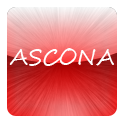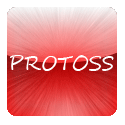 ASCONA
ASCONA

ASCONA is a fully automated command line tool for generating sequence alignments and superpositions of protein binding sites. Itisgeared to the alignment of alternative protein conformations and especially addresses the tasks of dealing with highly flexible backbone regions, detecting multiple occurrences of a binding site in oligomeric structures, and coping with arbitrary annotation inconsistencies and structural artifacts.
ASCONAPublikationen
- Bietz, S.; Rarey, M. (2015) ASCONA: Rapid Detection and Alignment of Protein Binding Site
Conformations . Journal of Chemical Information and Modeling, 55(8):1747–1756.
Conformator
Conformator is a novel conformer ensemble generator that stands out by its handling of macrocycles, high accuracy, as well as robustness with respect to input formats and molecular geometries. With an extended set of rules for sampling torsion angles, a novel algorithm for macrocycle conformer generation, and a new clustering algorithm for the assembly of conformer ensembles, Conformator generates high-quality conformation ensembles.
ConformatorCS Fingerprints
The Connected Subgraph Fingerprint (CSFP) is a novel fingerprint method which, in contrast to other methods, captures all connected subgraphs as structural features of a compound. This property gives the CSFP a complete feature space and high adaptive potential. Apart from surpassing common methods in standard similarity-driven virtual screening settings, the CSFP has substantial structural advantages when applied to combinatorial fragment spaces or in machine learning.
CS FingerprintsPublikationen
- Bellmann, L.; Penner, P.; Rarey, M. (2019) Connected Subgraph Fingerprints: Representing Molecules Using Exhaustive Subgraph Enumeration . Journal of Chemical Information and Modeling, 59 (11):4625-4635.
EDIA
The electron density score for individual atoms (EDIA) quantifies the electron density fit of each atom in a crystallographically resolved structure. Multiple EDIA values can be combined with the help of the power mean to compute EDIAm, the electron density score for multiple atoms to score a set of atoms such as a ligand, a residue, or an active site.
EDIAPublikationen
- Meyder, A.; Nittinger, E.; Lange, G.; Klein, R.; Rarey, M. (2017) Estimating Electron Density Support for Individual Atoms and Molecular Fragments in X-ray Structures . Journal of Chemical Information and Modeling, 57(10):2437–2447.
FSees
The fragment space exhaustive enumeration system (FSees) is an efficient method for exhaustively enumerating all molecules within a certain molecular subspace. This chemical space is described as a fragment space and constrained by a set of user-defined physicochemical properties. The FSees algorithm uses file-based data structures to overcome the limitation of computer main memory thus allowing to enumerate very large chemical spaces. The resulting chemical library can be used as a starting point for computational lead-finding technologies, like similarity searching, pharmacophore mapping, docking, or virtual screening.
FSees FTrees und FTrees-FS
FTrees und FTrees-FS

FTrees (Feature Trees) ist ein Moleküldeskriptor basierend auf der Idee reduzierter Graphen. Dabei wird ein Molekül durch die kovalente Struktur seiner wesentlichen Baugruppen repräsentiert. Der Vergleich von Molekülen auf der Basis von FTrees ermöglicht das Scaffold-Hopping, da die chemische Struktur der Baugruppen selbst von untergeordneter Bedeutung sind.
FTrees können zur kombinatorischen Suche in Fragmenträumen eingesetzt werden (FTrees-FS). Die dazu notwendige doppelt-dynamische Programmierung ist die heute einzige verfügbare, deterministische und präzise Methode zur Suche nach ähnlichen Molekülen in Fragmenträumen. FTrees und FTrees-FS werden von der BioSolveIT GmbH lizensiert.
Ebenfalls basierend auf FTrees wurde die Software LoFT für das Design fokussierter chemischer Bibliotheken auf der Basis von Fragmenträumen entwickelt.
Publikationen
- Fischer, J. R., Lessel, U., Rarey, M. (2011) Improving Similarity-Driven Library Design: Customized Matching an Regio-Selective Feature Trees . Journal of Chemical Information and Modeling, 51(9):2156–2163.
- Fischer, J.R., Lessel, U., Rarey, M. (2010) LoFT: Similarity-Driven Multi-Objective Focused Library Design . Journal of Chemical Information and Modeling, 50(1):1-21.
- Fischer, J. R., Rarey, M. (2007) SwiFT: an index structure for reduced graph descriptors in virtual screening and clustering . Journal of Chemical Information and Modeling, 47(4):1341-53.
- Rarey, M., Stahl, M. (2001) Similarity Searching in Large Combinatorial Chemistry Spaces . Journal of Computer-Aided Molecular Design, 15:497-520.
- Rarey, M., Dixon, J.S. (1998) Feature Trees: A new molecular similarity measure based on tree matching . Journal of Computer-Aided Molecular Design, 12:471-490.
 HYDE
HYDE

HYDE ist eine neue Methode zur energetischen Bewertung von Protein-Ligand-Komplexen. Die Hyde-Funktion wurde anhand von gemessenen Oktanol-Wasser-Verteilungskoeffizienten (logP-Werte) parametrisiert und bewertet in konsistener Weise Wasserstoffbrücken, Dehydratation und den hydrophoben Effekt. Die patentierte Hyde-Technologie wurde gemeinsam mit Bayer CropScience und der BioSolveIT GmbH entwickelt. Hyde ist Teil der LeadIT-Software (BioSolveIT GmbH).
HYDEPublikationen
- Schneider, N., Klein, R., Lange, G., Rarey, M. (2012) Nearly no Scoring Function without a Hansch-Analysis . Molecular Informatics, 31(6-7):503–507.
- Schneider, N., Hindle, S., Lange, G., Klein, R., Albrecht, J., Briem, H., Beyer, K., Claußen, H., Gastreich, M., Lemmen, C., Rarey, M. (2011) Substantial improvements in large-scale redocking and screening using the novel HYDE scoring function . Journal of Computer-Aided Molecular Design, 26(6):701-723.
- Reulecke, I., Lange, G., Albrecht, J., Klein, R., Rarey, M. (2008) Towards an integrated description of hydrogen bonding and dehydration: II. Reducing false positives in virtual screening using the HYDE scoring function . ChemMedChem, 3(6):885-897.
 Mona
Mona

Mona is an interactive tool that can be used to prepare and visualize large small-molecule datasets. A set centric workflow allows to intuitively handle hundred thousands of molecules. Building upon the robust framework Naomi common cheminformatics tasks such as analysis, filtering and converting of molecular files can be performed with high efficiency.
MonaPublikationen
- Matthias Hilbig;
Matthias Rarey (2015) MONA 2: A Light Cheminformatics Platform for Interactive
Compound Library Processing . Journal of Chemical Information and Modeling, 55(10):2071–2078. - Hilbig, M.; Urbaczek, S.; Groth, I.; Heuser, S.; Rarey, M. (2013) MONA - Interactive manipulation of molecule collections . Journal of Cheminformatics, 5 (38)
 NAOMI
NAOMI

NAOMI ist ein Kommandozeilen-Werkzeug zur konsistenten Konvertierung zwischen verbreiteten Molekül-Fileformaten (SDF, SMILES, MOL2). NAOMI basiert auf einem robusten, chemischen Modell, welches mit dem Ziel entwickelt wurde, organische Moleküle korrekt zu beschreiben. NAOMI prüft zudem die chemische Validität von Molekülen und berechnet Wasserstoffkoordinaten.
Im Juni 2016 wurde NAOMI durch unseren neuen, leistungsfähigeren universellen Konverter UNICON ersetzt.
NAOMIPublikationen
- Urbaczek, S., Kolodzik, A., Fischer, J. R., Lippert, T., Heuser, S., Schulz-Gasch, T., Rarey, M. (2011) NAOMI: On the Almost Trivial Task of Reading Molecules
from Different File formats . Journal of Chemical Information and Modeling, 51(12):3199-3207.
NAOMInext
NAOMInext is a software tool supporting medicinal chemists during hit-to-lead optimization. Starting from a co-crystallized small fragment, synthetic feasible lead compounds are generated directly within the proteins binding site. Thus, the software implicitly perfoms target-focused library design.
NAOMInextPublikationen
- Sommer, K.; Flachsenberg, F.; Rarey, M. (2018) NAOMInext - Synthetically feasible fragment growing in a structure-based design context . European Journal of Medicinal Chemistry, 163:747-762.
 NAOMInova
NAOMInova

NAOMInova is a software tool enabling the geometrical and chemical analysis of atoms surrounding a user-defined structure of interest. Based on a user-selected set of protein structures, substructures can be searched and the distribution of partner points can be visualized. Two visualization options are available: the „set“ visualization, i.e. the partner points surrounding the substructure, and the „pocket“ visualization, i.e. the transformation of all partner points surrounding the substructure into a suitable active site of interest. Diverse geometric - distance, angles, resolution - and chemical - atom type, location, amino acid - properties can be selected for further analysis. Additionally, for each partner point the original complex is stored, which allows an easy evaluation whether this point is of interest for the user or not.
NAOMInova PELIKAN
PELIKAN

PELIKAN is a software tool enabling rapid searching of spatial interaction patterns in large collections of protein-ligand complexes. Data from protein-ligand complexes is stored in an SQLite database which can be subject to different search processes.
The PELIKAN software package comes with a graphical user interface, providing dialogs to build SQLite databases from any set of protein-ligand complexes and allowing the convenient construction of 3D queries starting from a protein-ligand interface of interest or from scratch. The results of a search are shown in a 3D viewer.
PELIKAN PoseView
PoseView

PoseView generiert automatisch zweidimensionale Diagramme von Komplexen mit Schwerpunkt auf dem Interaktionsmuster zwischen Ligand und Protein. Interaktionen zwischen Molekülen werden durch ein eingebautes Interaktionsmodell geschätzt, welches auf Atomtypen und einfachen geometrischen Kriterien basiert. Die Qualität der resultierenden Diagramme ist vergleichbar mit handgezeichneten Beispielen aus Lehrbüchern und wissenschaftlichen Veröffentlichungen.
PoseView @ PDB
Publikationen
- Stierand, K., Rarey, M. (2010) Drawing the PDB - Protein-Ligand Complexes in two Dimensions . Medicinal Chemistry Letters, 1(9):540-545.
- Stierand, K., Rarey, M. (2007) From Modeling to Medicinal Chemistry: Automatic generation of two-dimensional complex diagrams . ChemMedChem, 2(6):853-860.
- Stierand, K., Maaß, P. C., Rarey, M. (2006) Molecular Complexes at a Glance: Automated Generation of two-dimensional Complex Diagrams . Bioinformatics, 22(14):1710-1716.
 ProToss
ProToss

ProToss wurde zur automatisierten Vorhersage von Wasserstoffatomen in Protein-Ligand-Komplexes entwickelt. Es ermöglicht sowohl zu einer Komplexstruktur fehlende Wasserstoffe hinzuzufügen als auch Koordinaten vorherzusagen sowie sinnvolle Tautomer und Protonierungszustände zu generieren.
ProTossPublikationen
- Bietz, S.; Urbaczek, S.; Schulz, B.; Rarey, M. (2014) Protoss: a holistic approach to predict tautomers and protonation states in protein-ligand complexes . Journal of Cheminformatics, 6(12):1-12.
- Lippert, T., Rarey, M. (2009) Fast automated placement of polar hydrogen atoms in protein-ligand complexes . Journal of Cheminformatics, 1(13)
 RAISE
RAISE

RAISE steht für RApid Index-based Screening Engine = Schnelle Index-basierte Screening-Maschinerie. Einer Dreiecksdescriptoren-Repräsentation von Liganden und Protein-Bindetaschen erlaubt hocheffizientes Screening von großen Datenmengen. Mit der cRAISE-Software wird der klassische Anwendungsfall von der Suche nach potentiellen Liganden für ein Protein abgedeckt. Die iRAISE-Software hingegen deckt den inversen Fall ab- die Suche nach potentiellen Proteintargets für ein kleines Molekül.
RAISE Recore
Recore

Recore ist ein index-basiertes Softwaresystem zum Rescaffolding. Ausgehend von einem bioaktiven Molekül können interaktiv Teile des Moleküls markiert und durch geometrisch passende Fragmente ersetzt werden. Recore erlaubt die Berücksichtigung pharmakophorer Randbedingungen. Durch Anbindung an die Cambridge Cristallographic Database (CSD) werden niederenergetische Konformationen erzeugt. Die Indizierung erlaubt ein nahezu interaktives Arbeiten. Recore ist Teil der LeadIT-Software (BioSolveIT GmbH).
RecorePublikationen
- Maaß, P., Schulz-Gasch, T., Stahl, M., Rarey, M. (2007) Recore: A fast and Versatile Method for Scaffold Hopping Based on Small Molecule Crystal Structure Conformations . Journal of Chemical Information and Modeling, 47(2):390-399.
SIENA
SIENA is a software pipeline enabling the fully automated construction of protein structure ensembles from the PDB. Starting with a single query structure, all binding sites with high sequence similarity are extracted from the PDB, aligned, and protonated. SIENA is able to deal with complicated cases like binding sites at protein domain interfaces or within homo-multimeric proteins.
SIENAPublikationen
- Bietz, S.; Rarey, M. (2016) SIENA: Efficient Compilation of Selective Protein Binding Site Ensembles . Journal of Chemical Information and Modeling, 56(1):248-59.
- Bietz, S.; Rarey, M. (2015) ASCONA: Rapid Detection and Alignment of Protein Binding Site
Conformations . Journal of Chemical Information and Modeling, 55(8):1747–1756.
SMARTScompareViewer
The SMARTScompareViewer and the accompanying SMARTScompare command line tool offer chemical pattern comparisons for the SMARTS language. SMARTScompare determines similarity and subset relations between SMARTS-patterns.
SMARTScompareViewerPublikationen
- Ehmki, E.S.R.; Schmidt, R.; Ohm, F.; Rarey, M. (2019) Comparing Molecular Patterns Using the Example of SMARTS: Applications and Filter Collection Analysis . Journal of Chemical Information and Modeling, 59(6):2572-2586.
- Schmidt, R.; Ehmki, E.S.R.; Ohm, F.; Ehrlich, H.-C.; Mashychev, A.; Rarey, M. (2019) Comparing Molecular Patterns Using the Example of SMARTS: Theory and Algorithms . Journal of Chemical Information and Modeling, 59(6):2560-2571.
 SMARTSeditor
SMARTSeditor

The SMARTSeditor is a graphic editing tool for generic chemical patterns. Based on the SMARTS language, chemical patterns can be created and edited interactively, similar to molecule editing in a chemical structure editor. The SMARTSeditor supports editing of given SMARTS or editing of chemical pattern without knowledge of the SMARTS language from scratch. It supports logic combinations as well as atom environment definitions. The generated pattern is converted into a SMARTS string which can be used in any application where the pattern is needed, e.g. for filtering of molecule databases.
SMARTSeditorPublikationen
- Bietz, S.; Schomburg, K. T.; Hilbig, M.; Rarey, M. (2015) Discriminative Chemical Patterns: Automatic and Interactive Design . Journal of Chemical Information and Modeling, 55(8):1535–1546.
- Schomburg, K., Wetzer, L., Rarey, M. (2013) Interactive design of generic chemical patterns . Drug Discovery Today, 13:1-8.
SpaceCompare
SpaceCompare is a novel tool for the comparison and analysis of ultra-large combinatorial chemical spaces. It enables the complete examination of trillion-sized chemical spaces for the first time by employing a combinatorial algorithmic approach. The tool has three modes of operation
- overlap calculation of two combinatorial spaces
- distribution computation for five well-known physicochemical properties
- chemical space optimization by removal of fragments with undesired properties
SpaceLight
SpaceLight is a novel search method for similarity-driven virtual screening in large combinatorial fragment spaces using topological fingerprints. It utilizes the well-known ECFP and the Connected Subgraph Fingerprint (CSFP) to describe molecular similarity. In contrast to existing workflows using fingerprint methods, the SpaceLight approach is able to exploit the combinatorial character of fragment spaces and consequently can conduct similarity searches considering billions of compounds within seconds on a standard PC. In addition fragments forming scaffolds can be retreived to identify reaction routes for compounds and custom fragment spaces can be generated.
SpaceLightPublikationen
- Bellmann, L.; Penner, P.; Rarey, M. (2021) Topological Similarity Search in Large Combinatorial Fragment Spaces . Journal of Chemical Information and Modeling, 61(1):238-251.
SpaceMACS
SpaceMACS is a novel search method for similarity-driven virtual screening in large combinatorial fragment spaces. SpaceMACS identifies maximum common connected induced substructures between a query and all products of a fragment space, like commercial make-on-demand libraries. SpaceMACS heavily exploits the fragment structure of those spaces screening billions or even trillions of compounds within seconds to minutes on standard desktop computers. Runtimes depend on the number of results retrieved and the size of the fragment space representation. In general, they are mostly independent of the number of compounds represented. In order to explore fragment spaces, the SpaceMACS tool supports interactive command line sessions and processing of multiple queries avoiding the need to load the space for every single query.
SpaceMACSPublikationen
- Schmidt, R.; Klein, R.; Rarey, M. (2021) Maximum Common Substructure Searching in Combinatorial Make-on-Demand Compound Spaces . Journal of Chemical Information and Modeling, 62(9):2133–2150.
StructureProfiler
Three-dimensional protein structures play a vital role in drug design. Thorough examination of the available data before usage in experimentation and method validation is highly recommended. StructureProfiler assists in automatically profiling structures ranging from model characteristics like low R factor over active site features such as bond lengths in expected ranges to ligand properties such as electron density coverage and frequently seen torsion angles.
Publikationen
- Meyder, A.; Kampen, S.; Sieg, J.; Fährrolfes, R.; Friedrich, N.-O.; Flachsenberg, F.; Rarey, M. (2018) StructureProfiler: An all-in-one Tool for 3D Protein Structure Profiling . Bioinformatics, 35(5):874-876.
 Torsion Analyzer
Torsion Analyzer

Der Torsion Analyzer ist ein graphisches Softwarewerkzeug zur Analyse von Torsionswinkeln in kleinen Molekülen. Das Programm basiert auf einer Sammlung von SMARTS-Mustern und Regeln, welche aus der statistischen Analyse von Kristallstrukturen abgeleitet wurden. Die rotierbaren Bindungen eines Moleküls werden in eine von drei Kategorien (häufig, grenzwertig, selten) eingeteilt und dann entsprechend eingefärbt.
Der Torsion Analyzer wurde in Kooperation mit F. Hoffmann-La Roche Ltd. entwickelt (siehe auch Publikationen).Die Software kann kostenlos heruntergeladen werden unter:
Torsion AnalyzerPublikationen
- Guba, W.; Meyder, A.; Rarey, M.; Hert, J. (2016) Torsion Library Reloaded: A New Version of Expert-Derived SMARTS rules
for Assessing Conformations of Small Molecules . Journal of Chemical Information and Modeling, 56(1):1-5. - Schärfer, C., Schulz-Gasch, T., Ehrlich, H.C., Guba, W., Rarey, M., Stahl, M. (2013) Torsion Angle Preferences in Drug-like Chemical Space: A Comprehensive Guide . Journal of Medicinal Chemistry, 56 (6):2016-28.
- Schulz-Gasch, T., Schärfer, C., Guba, W., Rarey, M. (2012) TFD: Torsion Fingerprints As a New Measure To Compare Small
Molecule Conformations . Journal of Chemical Information and Modeling, 52(6):1499−1512.
UNICON
UNICON is a command-line tool to cope with common cheminformatics tasks. The functionality of UNICON ranges from file conversion between standard formats SDF, MOL2, SMILES, and PDB via the generation of 2D structure coordinates and 3D structures to the enumeration of tautomeric forms, protonation states and conformer ensembles.
UNICON